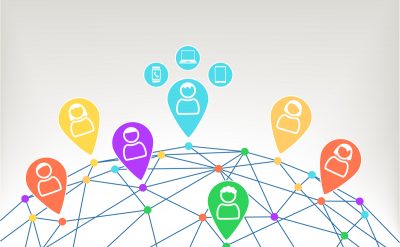Artificial Intelligence is no longer just an idea of the future, it works, and it understands our requirements. In communication and collaboration space, enterprises are increasingly becoming adoptive of Artificial intelligence (AI) offering. Enterprises are looking towards Artificial intelligence as a solution that can provide deeper insights of customer action or reaction along with employees response to that; it can also provide a better overview of how the systems and processes work in the given environment. Around 41 percent of enterprises are saying that they are planning to use the AI in their Unified Communication (UC) applications by the end of this year. As technology progresses and Artifical Intelligence (AI) becomes a part of our daily lives, it will have a direct and positive impact on unified communications. However, the current applications of AI consumer tech aren’t going to cut the requirements of enterprises. The AI applications need to be defined and accurate that can make business operations more reliable.
Artificial Intelligence is set to be more transformative than just easing the business communications that were earlier required. Artificial Intelligence will further elevate the enterprise by innovating the process of business, securing digital assets both online and offline, improve collaboration and include new ear of AI-powered innovation. Enterprises AI are rapidly moving beyond the hype and reality of application where it is all set to be primed to become one of the most consequential technology segments.
Artificial Intelligence consists of various processes or steps such as intelligent automation, machine learning, natural processing, deep learning and more. AI occurs when a computer or robot can act like a human brain and make educated decisions. Enterprise AI is taking AI’s abilities and using them within an enterprise to decide after gaining insights and collecting data along with decisions focused on the counter and the businesses. Current technology solutions are falling behind because of human interference that needs to acknowledge the required decisions making. Enterprise AI is best used for cognitive engagement strategies that involve the inputs of different customer data, predictive analytics to produce insights about future customer behavior. Sales teams and marketers can use AI tools to track customer behavior with various engagement channels and produce the required targeted campaigns. However, when we move towards the enterprise side wherein the unified communication can solve the required communication challenges between peer to peer we need AI to act as a foundation for improving the required. Enterprise AI is set to improve Unified Communication (UC) with more focus on the customer experience and deriving the improved results.
The AI application implementation in Unified Communication is still far from today’s application demand, the real world AI application in unified communication, and collaboration offerings are emerging. For most of them, they include bots that will enable natural language conversion with data, voice control in the application during conferencing or AI assistant for customer service. The collaboration environment is still far from begin reality wherein an AI technology assist you in making decisions and gives tools to make the communication an easy reality. One of the latest application that we have seen in reality over the last three years is to perform a real-time language translation, enabling employees of different regions to collaborate without any communication gap. Having an ML and AI inside a unified communication an lead to key potential business applications.
The first and one of the biggest application is for individuals who easily can access the data using an AI tool. Today finding documentation has become a tedious task, and most employees work on more than two systems. Analyzing the data may require writing a script or form wherein an AI can kick in to provide the user with natural language analysis. For example, if an employee wants to access the third quarter projections and compare with the second quarter projections along with generating a report it can easily do with the Salesforce.com customer relationship management (CRM). The second and most plausible benefit of predictive is to have an AI engine that could anticipate needs or next steps based on learning of past activities. So if one Monday a peer to peer call is necessary to understand the progress of the project, the AI would send an alert along with having required information in hand before the call. The predictive tool will gather all the information and also provide a detailed report about the same.
One of the other AI application that UC providers are greatly exploring is making the communication have a completely virtual environment, wherein a people inside a room can communicate with people sitting in some other part of the world, but a virtual projection will show that they are sitting inside the same room. The rapid shift of AI technology combined with virtual reality can bring communication and collaboration to complete a different level. AI and ML tools are all set to bring the required comprehensive approach and continuity that is missing in the unified communications.
Conclusion
Unified Communications (UC) provider are approaching the AI technology with caution, as the implementation might bring unwanted glitches. What most providers are doing is making AI a solution for service management rather than ease collaboration through data analysis. Enterprises are reluctant to share information on daily communication and collaboration citing confidentiality issues. The recent survey conducted for the Business using AI technology or Unified Communication they found that 49 percent of them want to keep both technologies away from each other, collaboration easement still depends on hardware, networking solutions, and seamless collaboration software.
To know more, you can download our recent whitepapers on Unified Communication.









































































